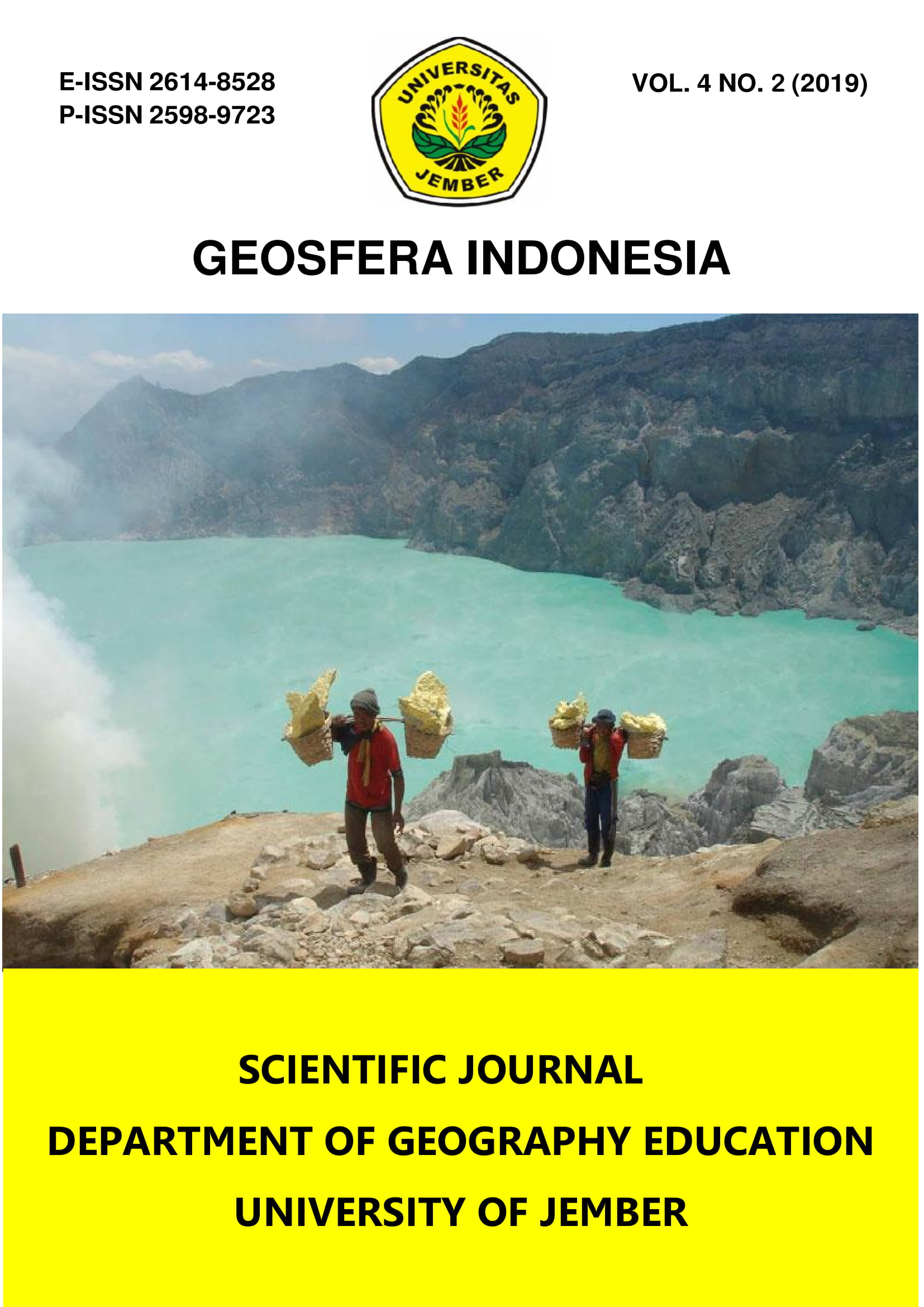UTILIZATION OF FOREST BY WOLASI SUB-DISRICT COMMUNITY, SOUTH SULAWESI
DOI:
https://doi.org/10.19184/geosi.v4i2.9435Abstract
This study aims to determine the utilization of forests conducted by communities in forest area of Wolasi sub-district. This research was conducted in Wolasi forest sub-district of Southeast Sulawesi Province. The research methods used were survey and interview with 86 and 87 respondents with purposive sampling by plotting two different villages characteristics to represent forest utilization form in different area (villages in lowland landforms) and Aoma village (village has the shape of hilly terrain). The result of this study examining the forests utilization of inhabitants in Wolasi sub-district, which is represented by two topographic characteristics. Reseacher selected two similar conditions that engage the forest as a source of daily needs and workface that is considered as a resource, producing timber and non-timber products. Ranowila inhabitants occupations are dominated with farmers, while in Leleka village, despite being farmers, some inhabitants are craftsmen of non-timber forest products such as bamboo and rattan as well as furniture entrepreneur. This fact is influenced by residential areas that close to the forest and can be observed through the neighbourhood area which is close to the temporary forest area in Leleka Village. Temporary forest is located in an area which always extends land, since the topography circumstance encourages numerous people prefer to live closely towards their managed land. The forest is beneficial both in the term of land utilization or forest products,due to the distance there is limited knowledge,as well as limited work, it enhances low expenditure obtained.
Keywords: Utilization, Forest, Community in District Wolasi
References
Adhikari, B., Di Falco, S., & Lovett, J. C. (2004). Household characteristics and forest dependency: evidence from common property forest management in Nepal. Ecological economics, 48(2), 245-257.
Nurbaya & Efransjah (2018). The State of Indonesia’s Forests 2018. Jakarta: Ministry of Environment and Forestry Republic of Indonesia.
Aryadi, M. (2012). Hutan rakyat: fenomenologi adaptasi budaya masyarakat. UPT Penerbitan, Universitas Muhammadiyah Malang.
Banowati, E., & Sriyanto.(2013). Geografi Pertanian. Yogyakarta:Ombak.
Cannon, C. H., Summers, M., Harting, J. R., & Kessler, P. J. (2007). Developing conservation priorities based on forest type, condition, and threats in a poorly known ecoregion: Sulawesi, Indonesia. Biotropica, 39(6), 747-759.
Dudley, N., Schlaepfer, R., Jackson, W., Jeanrenaud, J. P., & Stolton, S. (2012). Forest quality: assessing forests at a landscape scale. Routledge.
Gibson, L., Lee, T. M., Koh, L. P., Brook, B. W., Gardner, T. A., Barlow, J., ... & Sodhi, N. S. (2011). Primary forests are irreplaceable for sustaining tropical biodiversity. Nature, 478(7369), 378.
Parrotta, J.A.(2015). The Historical, Environmental and Socio-economic Context of Forests and Tree-based Systems for Food Security and Nutrition. 1(3), 72-136.
Pongtuluran, Y. (2015). Manajemen sumber daya alam dan lingkungan. Penerbit Andi.
Silaen, A.P. (2008).Preservation of Forest and Environmental Functions Environmental Law Perspectives. 16 (3), 218-594.
Suradi, S. (2012). Pertumbuhan Ekonomi dan Kesejahteraan Sosial. Sosio Informa, 17(3). Wagner, S., Nocentini, S., Huth, F., & Hoogstra-Klein, M. (2014). Forest management approaches for coping with the uncertainty of climate change: trade-offs in service provisioning and adaptability. Ecology and Society, 19(1).
Wirakusumah, S. (2003). Mendambakan Kelestarian Sumber Daya Hutan Bagi Sebesar-Besarnya Kemakmuran Rakyat. Penerbit Universitas Indonesia. Jakarta. Cetakan Pertama.
Copyright (c) 2019 Geosfera Indonesia Journal and Department of Geography Education, University of Jember

This work is licensed under a Creative Commons Attribution-Share A like 4.0 International License



